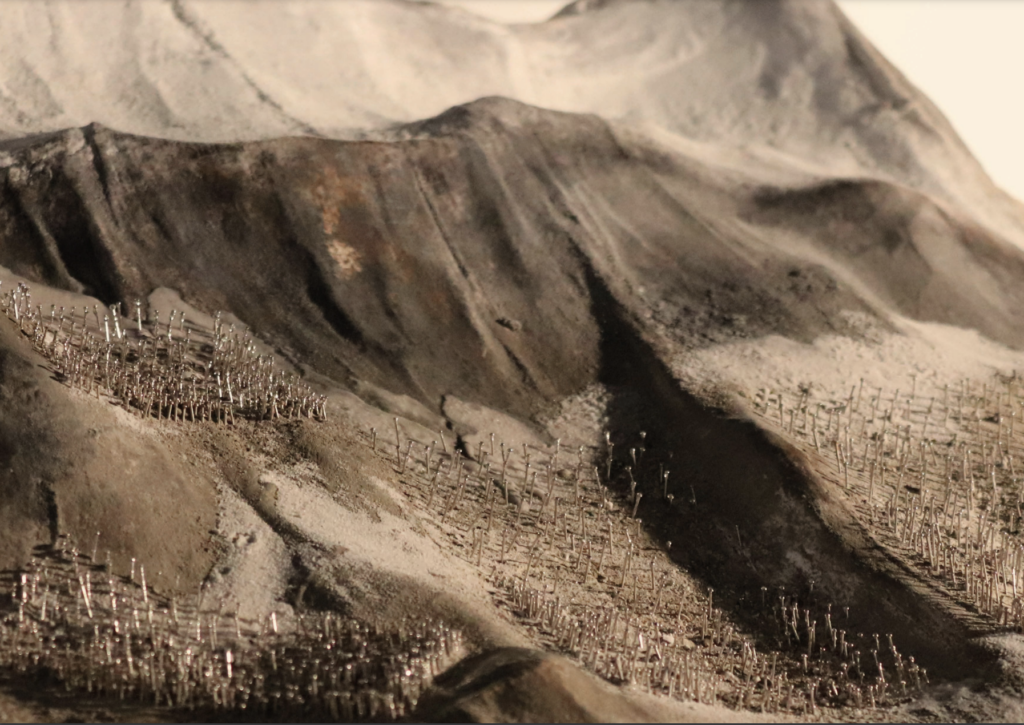Antonia Headlam-Morley (She / Her)


The Afterlife of the Dam
The hydroelectric energy produced from the Salanfe Dam services the equivalent of 30,000 households a year; but its future is uncertain. Loose sediments, sliding down from the slopes of the Dents du Midi mountain range in the south west of Switzerland are accumulating in the reservoir, decreasing its volume and in turn the reliability of hydroelectric power. This thesis aims to find a method of ensuring the capacity of the lake, preserving the functioning capability of the Miéville power station, as well as creating stable ground which supports vegetation and growth in the future.
Working with this fragile terrain, the landscape intervention strategy proposed in the first half of this thesis details how an implementation of wooden poles could provide a framework for sediments to accumulate, densify and stabilise the hillside. Supported by case studies such as The Renaturation of The River Aire and through physical experimentation, the system of poles act as scaffolding for the new landscape, becoming increasingly hidden by the layers of accumulating earth. At first they are installed in a strict, geometric language, which in time becomes overwhelmed by nature and is transformed into a solid framework for vegetation.
The second half of the thesis aims to design an architectural presence which facilitates the creation of these landscape grids. The principles dealt with when designing the interventions, those of time, purpose and evolution in design prompted the development of an architectural language which questions how an inhabitable place can become habitable for a finite time. The thesis asks how one can design a building which facilitates the creation of these interventions, a necessary step in order to stop the reservoir from filling with sediments, without leaving a mark itself.
The two scales, macro to micro, become linked and communicate with one another as the structure, which holds a wood mill and space for scientific research, sits directly in conversation with the interventions edge, mimicking the changeable qualities of the terraces, evolving with time and the maturing landscape. The building begins in its conception full of life and energy, a place of production and research, before slowly calming down to a quiet shelter as the rest of the structure becomes enveloped by the intervention grid.
Through these gestures, the thesis seeks to ensure the afterlife of the dam. In the future, while the lake remains a reliable source of renewable energy, the mountainside becomes an escape from the worsening climate conditions in the valley, with lakes and forest covering the now scree coated paths, with new destinations for hikers to discover. The landscape becomes a place of interest in itself, from its geological morphology to its character.
The first part of this thesis was undertaken in collaboration with Michelle Brunner, during a semester abroad at USI Accademia di Architettura in Mendrisio, Switzerland.













